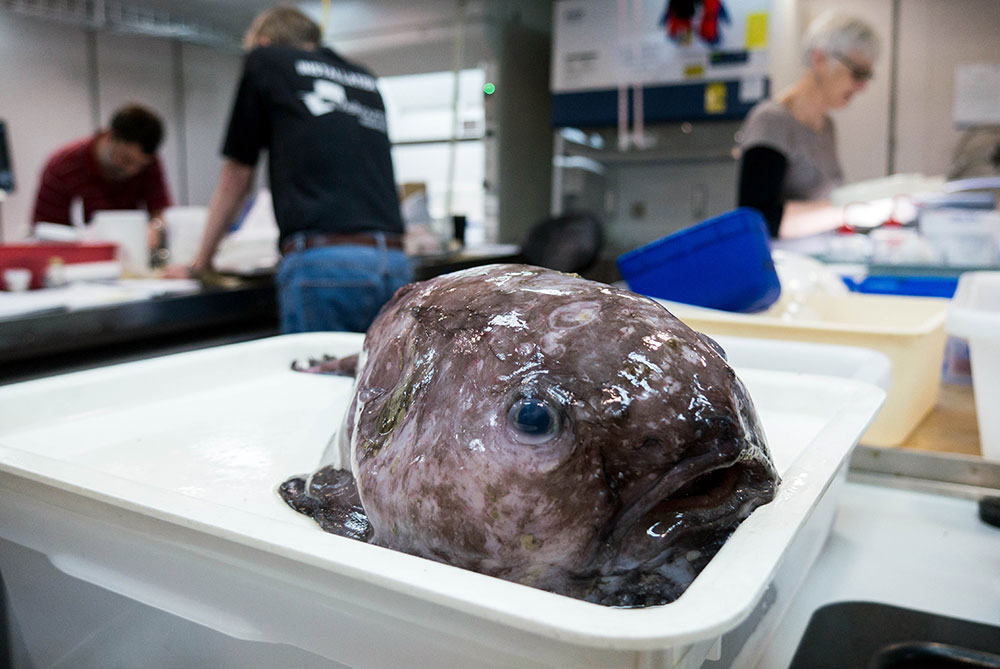Cousin of ugliest fish hauled up from abyss


SYDNEY - More than 100 rarely seen fish species were hauled up from a deep and cold abyss off Australia during a scientific voyage, researchers said on Wednesday, including a cousin of the "world's ugliest animal" Mr. Blobby.
Scientists spent a month last year on a vessel off the country's eastern seaboard surveying life lurking up to 4.8 kilometers below the surface, using nets, sonar and deep-sea cameras.
Over 42,000 fish and invertebrates were caught, some of which are potentially new species with scientists gathering in the Tasmanian capital Hobart this week to examine them more closely.
They include blob fishes, which are cousins of Mr. Blobby, who was voted the world's ugliest animal in 2013 by the Ugly Animal Preservation Society and became a global media sensation.
Blobby, from the psychrolutidae family, was discovered off the coast of New Zealand in 2003 and affectionately named by the scientists who found it.
Other species unearthed during last year's voyage included bioluminescent cookie-cutter sharks with razor-sharp serrated teeth, a haul of frightening lizard fish, and graceful tripod fish, which prop themselves on the sea floor on long fins waiting for food to drift within reach.
Scientists have previously revealed they also came across an unusual faceless fish, which has only been recorded once before by the pioneering crew of HMS Challenger off Papua New Guinea in 1873.
Museums Victoria ichthyologist Martin Gomon said the gathering in Hobart was the first systematic attempt to examine life at abyssal zone depths anywhere along Australia's vast coastline.
"The discoveries provide us with a glimpse into how our marine fauna fits into the interconnected abyssal environment worldwide and for the scientists, adds another piece to the puzzle of what affects evolution in the deep sea," he said.
Life at such depths is one of crushing pressures, no light, little food and freezing temperatures, with animals that call it home evolving unique ways to survive.
As food is scarce, they are usually small and move slowly. Many are jellylike and spend their lives floating about, while others have ferocious spines and fangs and lie in wait until food comes to them.
CSIRO ichthyologist John Pogonoski described the trip as "frontier science" which was vital for increasing scientists' understanding of the deep-sea environment.
"We are investigating possible new species and fishes never before recorded in Australian waters," he said.
The voyage, an international collaboration led by Museums Victoria, was the first ever survey of the abyssal waters off Australia's east coast.
Australian National Fish Collection manager Alastair Graham said it was the largest and deepest habitat on the planet, covering one third of Australia's territory.
"But it remains the most unexplored environment on Earth," he said.
Agence France-presse

































